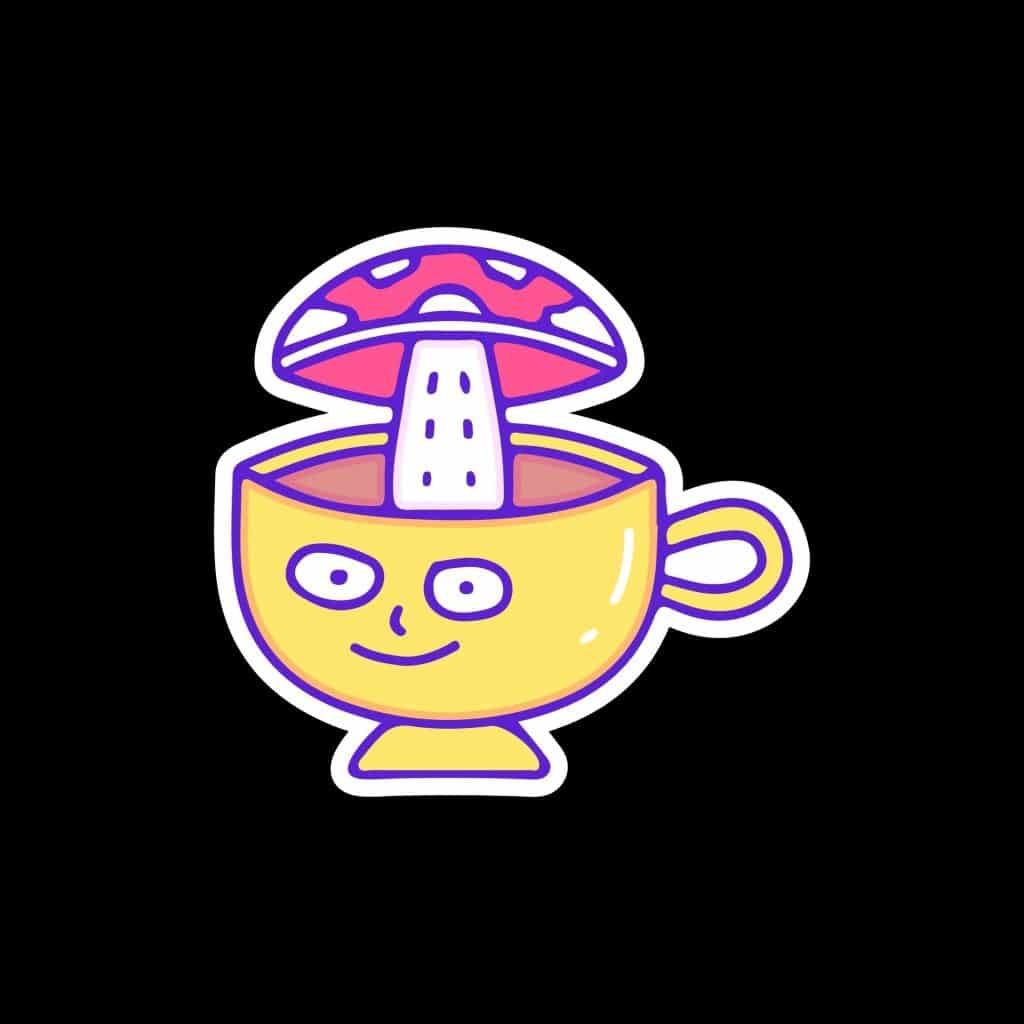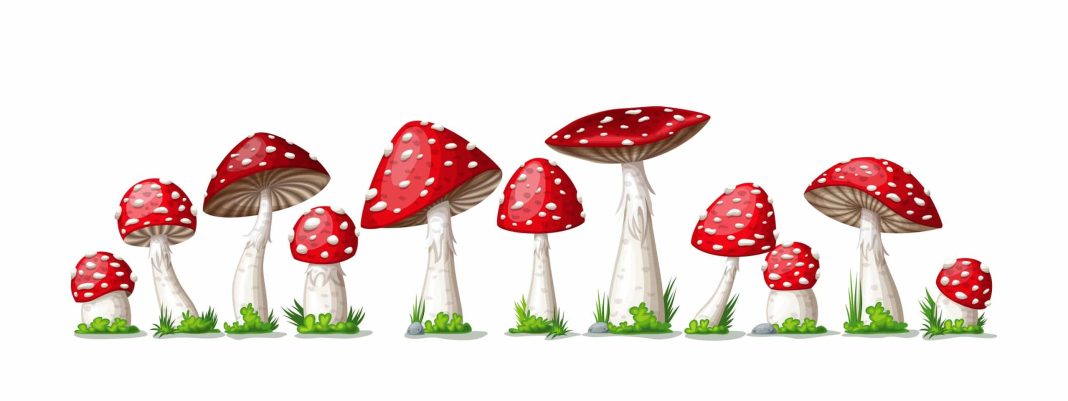Amanita mushrooms are growing in popularity, but as the new mushroom on the block, not everyone knows how to prepare them. While there are some standard methods of today, there’s also an age-old method that goes back many centuries (possibly millennia). And though I don’t advise anyone use it now, the amanita pee method is an interesting way to consume the desired active compound of the mushrooms.
Amanita mushroom basics
Amanita, or Amanita muscaria, (also known as ‘fly agaric’ for the ability to attract and kill insects) is a species of fungi within the ‘Amanita’ genus, along with many other mushrooms. Though the genus is considered ‘poisonous’, this is only true of other species within the genus, although the mushrooms it applies to are responsible for most mushroom deaths, making it a generally applicable term. Luckily, Amanita muscaria mushrooms contain different compounds, and haven’t been known to cause death, beyond a few mentions, which are unconfirmed as directly related to the mushrooms.
These mushrooms originated in colder areas like Siberia and Northern Europe; and it is their image that’s mostly associated with the term ‘magic mushrooms’, though this designation usually refers to psilocybin mushrooms. Amanita muscaria usually have red heads, with white dots, and are some of the most recognizable mushroom out there; even earning a place in Super Mario Brothers.
Amanita muscaria are unlikely to damage a person (let alone kill them), but they are known to produce a psychoactive response, which includes hallucinations. So how are these magic mushrooms different from the standard psilocybin mushrooms, which also cause hallucinations? Psilocybin mushrooms, aka ‘psychedelic mushrooms,’ are a part of the classing of psychedelic hallucinogens, which also include: LSD, DMT, and mescaline.
Thanks for joining us. Check out our Cannadelics Weekly Newsletter to get yourself direct updates; and also get access to a bunch of awesome deals on cannabis buds, vapes, edibles, smoking devices, cannabinoid compounds, and a variety more. Sure is fun to go get stoned. Please do so responsibly!
The main difference is in the active compounds, and the way they work. The psychedelics all mentioned above are different from each other, but have the same quality of being serotonergic, meaning they act as agonists at serotonin receptors, forcing them to fire more. This creates an increase of serotonin in the brain, which means these drugs all have a bit of a stimulant effect. They are all capable of causing not only euphoria, but feelings of spirituality, connectedness, and sensory hallucinations.
On the other hand, Amanita muscaria mushrooms don’t contain psilocybin. The main active compound is muscimol, which has a great effect on GABA receptors, making them fire more, and increasing that neurotransmitter in the brain. These are simplified answers of course, but they do show a basic difference between the two mushrooms, and their main compounds. Amanita mushrooms also cause a high of many hours, but it’s a sleepier high, which feels entirely different.
One of the other compounds in Amanita muscaria, is the compound ibotenic acid. And while this compound might play a part in the psychoactive experience; its not the compound of interest, and comes with the negative of making people sick. Not to the point of dying, but essentially creating a bad trip, something that is seen for other reasons with psychedelics.
The amanita pee method
There are ways to prepare amanita mushrooms to ensure that no ibotenic acid (or very little) is present, meaning getting rid of the negative effects such as sweating, twitching, and feeling overall sick. People do often get sick on these mushrooms, and simply getting rid of this compound, is the best way to avoid this. While we have different methods employed today; one of the earlier methods used by native tribes back in history, was the amanita pee method. Used, apparently, with people and with animals like reindeer.
The amanita pee method does the same thing as the other amanita preparation methods, it transforms the ibotenic acid to muscimol, thereby increasing the desired compound, and getting rid of the undesirable one. This is because, when the mushrooms are eaten, the ibotenic acid decarboxylates to muscimol in the body. The muscimol itself is excreted in the urine, practically unchanged.
Meaning if someone or something ate the mushrooms, they might get a little sick from the ibotenic acid. But that ibotenic acid would be gone by the time the person went to pee out the remainder of the compounds. And that pee, is then rich in muscimol, without the sick-inducing ibotenic acid. Meaning, if another person or animal was to drink that pee, they’d reap the benefits of the muscimol, without the ibotenic acid.
Honestly, I couldn’t make this stuff up if I wanted. This tradition of drinking pee goes back to the days of shamanistic traditions in Siberia, when both shamans and ordinary folk, would consume the mushrooms, for recreational and religious purposes. Stories indicate that in some areas, like eastern Siberia, it was the Shaman who ate the mushrooms, and their people who drank the urine. Stories about the Koryak people of eastern Siberia indicate the possibility that it was the rich who could afford the mushrooms, and the poor who would drink their pee.
Other stories relate to animals getting involved in this, particularly reindeer. The reindeer would eat the mushrooms, and then people would gather the urine and drink it. Likewise, the reindeer, apparently, became attracted to the urine of people who ate the mushrooms, and would seek out human urine with muscimol, to do the same thing. It’s said that the muscimol can take about six passes through the body before losing potency, indicating that there was a lot of re-drinking of the same muscimol urine.
It’s speculated that these reindeer stories helped mold the idea of reindeer and Christmas. Not only are Santa’s colors that of an amanita mushroom, but the idea of reindeer flying could easily be related to the concept of reindeer getting high off these mushrooms and acting silly, or that people were getting high on them around the antlered beasts, and involved them in their hallucinations. Reindeer were highly regarded animals among these ancient peoples, and therefore often around. Stories go as far as to say that tribesmen traveled with a little muscimol urine, just to attract back any wondering reindeer.
Other methods of consumption beyond the amanita pee method
Don’t worry, you don’t need to drink any pee just to have an amanita experience. Even back in the same general time period, many Siberians did what you can do today: boil the mushrooms to make a tea. Boiling them does the same thing as eating them, it decarboxylates the ibotenic acid to muscimol. As both compounds are water soluble, they’ll both leach out into the water, and with enough time (some say as little as 15 minutes) you can get rid of, or reduce, the ibotenic acid to manageable amounts.
The muscimol doesn’t degrade at these temperatures, meaning you don’t have to worry that boiling will destroy it. Just throw away the used mushrooms at the end, and drink the water when you’re done. Voila. I recently saw a post of someone talking about making the tea into ice cubes, and I thought that was a cool idea to incorporate it into other drinks.
Too much work? Hey, we’re busy people, fair enough. Truth is, you can eat the mushrooms raw; and we know by the ancient stories, that people did. Even if they found it better not to be the one to eat them fresh. The trick here is to get the oldest, most dried-out mushrooms possible. Ibotenic acid converts to muscimol over time, so an old, dried mushroom, will have much less than a nice, new ripe one.

If you are going to take your chances with a nice, new ripe one; try to know the exact kind you’re dealing with, and look it up if you can. Some naturally have greater levels of ibotenic acid; but if you’re looking to eat ones that don’t have as naturally high amounts, you’ll have a better chance of not getting sick.
*As a side note on the urine thing: we’re not exactly raised to appreciate the consumption of our (or our friend’s or pet’s) waste products, and there are reasons for this. While a small amount of urine consumption might not cause any issues, its best to remember that urine is full of waste products your body wants to get rid of. And think of something like a urinary tract infection, that could lead to bacteria in the urine. Truth is, while it might not be as bad as consuming oven cleaner, it’s not exactly the healthiest option, and there’s a reason we don’t naturally do it.
Why did they back then? It’s hypothesized that these mushrooms were not always easy to find, and using the urine allowed for multiple usages over time, of the same mushroom. So, when you think about it, this practice might be the ultimate example of recycling in history!
Conclusion
We live, we learn. And thank goodness for that. Otherwise, it might still be standard to do the amanita pee method. Luckily, we’ve progressed in our knowledge and understanding, meaning if you’re looking to get high off amanita mushrooms, you can do so without worrying about consuming your own, or anyone else’s pee. Phew!
Welcome all! Thanks for being a part of Cannadelics.com; an online news site geared toward bringing you the best in independent reporting for both the cannabis and psychedelics industries. Join us regularly to keep up with the times, and sign up for the Cannadelics Weekly Newsletter, to ensure you’re never late to get a story.





